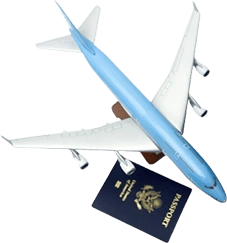

The Germany Opportunity Card is designed for skilled professionals who want to search for a job in Germany, while the EU Blue Card is for those who already have a job offer in a qualified role. Both permits aim to tackle skill shortages and strengthen Germany’s workforce, especially in fields like IT, engineering, healthcare, and science.Whether you want to find a job or already have one, these visa types open doors to long-term residence, career growth, and potential EU mobility.
You must meet the following eligibility criteria:



Pathway to Permanent Residency
No Labour Market Test (EU Blue Card)
Family Reunification
Mobility Within the EU (EU Blue Card)
Work in a Leading European Economy
Fast-Track for Qualified Professionals
Upgrade and Switch Options
No Labour Market Test (EU Blue Card)
It is a job-seeker visa for skilled non-EU nationals, allowing them to live in Germany for up to 12 months while searching for a job.
Non-EU citizens with a recognized degree and a job offer with a minimum salary from a German employer.
Yes. Once you find a qualifying job, you can apply for an EU Blue Card or another work permit.
As of 2025, the minimum annual salary is around €45,300, or €41,041 for shortage occupations.
Yes, both permit holders can sponsor family members, and spouses may be allowed to work.
Basic German (A1-B1) is helpful and sometimes required for the Opportunity Card, though English may suffice for certain roles and the Blue Card.
You can stay up to 12 months to search for work, with the possibility of extension or switching permits if employed.
Yes, you can apply for permanent residency after 33 months, or just 21 months with sufficient German language skills (B1).
We at Migratex Immigration Services take pride in guiding you through a seamless immigration journey. With our expertise, personalized solutions, and commitment to excellence, your dream destination is closer than ever.
© Copyrights 2025 Migratex All Rights Reserved.
